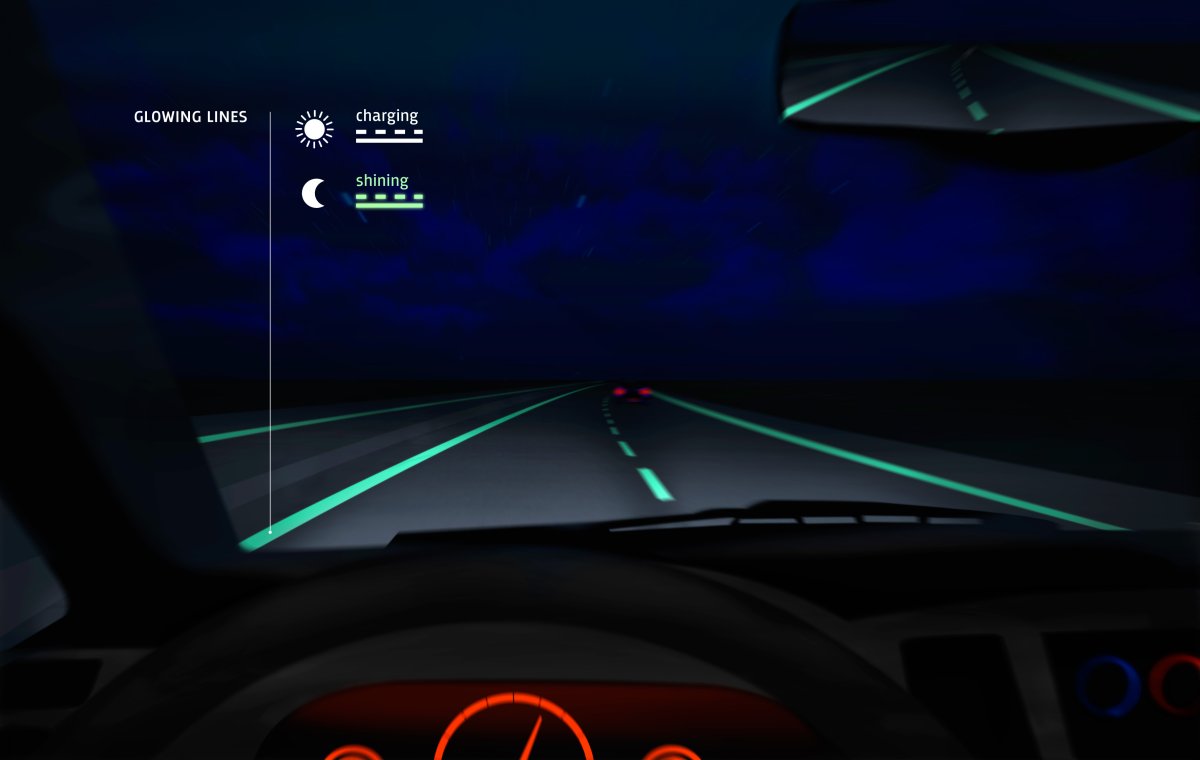A futuristic Tron-like highway in the Netherlands could help drivers see in low light thanks to glow-in-the-dark technology.

The Dutch have begun testing the world’s first glow-in-the-dark highway by sectioning off a 500m stretch of the N329 highway in Oss, in the country’s southeast, and outlining it in photo-luminising powder.
The Smart Highway project is a collaboration between interactive artist Daan Roosegaarde of Studio Roosegaarde and Heijmans, a civil engineering firm in the Netherlands in an effort to create more sustainable and interactive highways.
“Indeed, we started working on the Glowing Lines last week,” said Jamaica den Heijer, business developer for Studio Roosegaarde, in an e-mail to Global News. “The coming period we will test and upgrade this pilot of Smart Highway.”
The glow-in-the-dark paint absorbs daylight and can provide a green glow for up to eight hours in the dark.
“The government is shutting down streetlights at night to save money,” said Roosegaarde in an interview with BBC News. “Energy is becoming more important than we could have imagined 50 years ago. This road is about safety and envisaging a more self-sustainable and more interactive world.”
And according to Heijman’s website, the new technology can replace lighting posts on the side of highway and is “a sustainable alternative to places where no conventional lighting is present.”
- Ont. First Nation calls for chemical plant to be shut down amid ‘dangerously high’ benzene levels
- Ottawa looks to launch national flood insurance program within 12 months
- Nova Scotia scraps spring bear hunt idea, public ‘very divided’ on issue
- Alberta, coal lobbyists talked for years about more open-pit mining in the Rockies: documents
But before the UK Highways Agency gives its green light, it raises some concerns. The agency will be watching the trial closely to see how far in the distance the road markings can be seen, how visible they are during the daytime and if weather conditions such as snow and rain have an effect on the paint.
The project launches later this month.
Roosegaarde’s previous projects include an urban park with an electronic vacuum cleaner that removes smog particles from the air, a high-tech dress that becomes transparent when the wearer becomes aroused and a dance floor that lights up when powered by dance movements.
A similar project was launched by UK landscaping company Pro-Teq last October. STARPATH is a spray applied to sidewalks and roadways, illuminating them at night to replace streetlights. It can already be seen at Christ’s Pieces, a popular park near Cambridge City Council.
Would projects like the Smart Highway and STARPATH be possible for Canada? Maybe.
“The Ministry of Transportation is interested in pursuing this idea,” said Ajay Woozageer, Ontario Ministry of Transportation spokesperson. “But we have not been approached with a viable or feasible product to date.”
For now, the ministry is using other forms of reflective technology on Ontario highways, such as “Cat’s Eyes,” pavement markers reflecting light that can be viewed up to 800m in the distance.
Woozageer says that there are still many things to consider before committing to projects like this.
Other barriers include the unknown toxicity and environmental concerns of the paint, the fact that the markings are green while Ontario road markings are yellow and white and the possible effect winter maintenance operations could have on its illumination intensity.




Comments